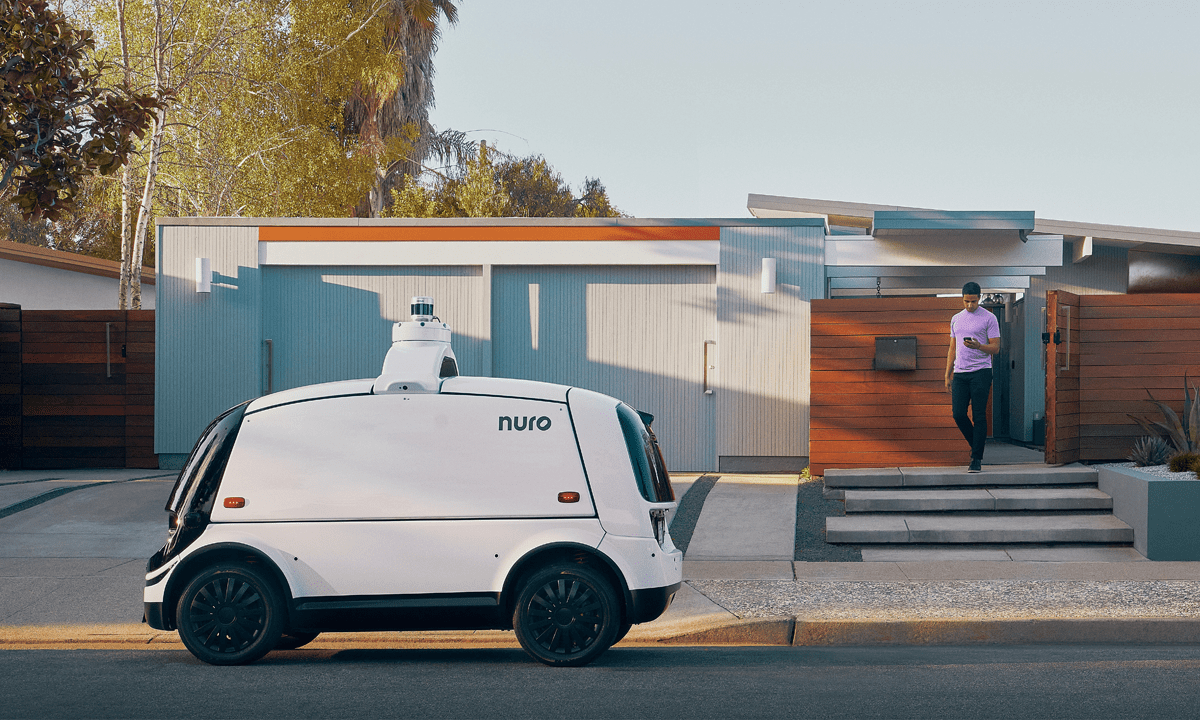Uber Eyes Long-Term Future of Robotic Delivery with 10-Year Partnership

As many restaurants and delivery aggregators test out robotic delivery, Uber has just made a major commitment, a testament to the company’s belief in the long-term viability of the technology. Uber announced Thursday (Sept. 8) a 10-year partnership with autonomous vehicle company Nuro.
Through this partnership, the two companies are beginning with robotic deliveries in Houston, Texas and Mountain View, California this fall, with a planned expansion to more of the Bay Area to follow.
“Nuro and Uber share a vision in which technology can make everyday life just a little bit easier,” Noah Zych, global head of autonomous mobility and delivery at Uber, said in a statement. “Nuro’s distinctive autonomous vehicles are a great match for the Uber platform, and this partnership will bring a compelling combination of innovation alongside the convenience, affordability and reliability our customers and merchants have come to expect.”
Uber has been exploring a range of robotic delivery partners in recent months. In May, the company launched two robotic delivery pilot tests in Los Angeles, one in partnership with driverless vehicle technology company Motional and one with autonomous sidewalk delivery company Serve Robotics, which spun off from delivery company Postmates (now owned by Uber) in 2017.
You may also like: Uber Eats Launches Two Robotic Delivery Pilots as Restaurant Industry Struggles to Meet Demand
Competitor Grubhub has also been exploring robotic delivery options. The Just Eat Takeaway-owned aggregator announced in June that, after a spring pilot test at Ohio State University, the company was making its partnership with self-driving robotics company Cartken available to colleges across the country.
See also: Grubhub Gears Up for Full Rollout of Campus Delivery Robots
“[We’re] augmenting the current runners that they have and the volumes that Grubhub sees on the campuses,” Anjali Naik, chief operating officer and co-founder of Cartken, told PYMNTS in an interview. “That’s really where robots fit in nicely, to shuttle food around in these short distance at those volume. … We’ve always seen this as something that will expand traditional delivery options, having this add-on to the delivery network that we see today.”
Read more: Grubhub Robotics Partner Predicts the P2P Future of Automated Delivery
The news comes as demand for restaurant aggregators grows. Research from the July edition of PYMNTS’ ConnectedEconomy™ series, “The ConnectedEconomy™ Monthly Report: The Rise of the Smart Home,” which drew from a May survey of a census-balanced more than 2,600 U.S. consumers, found that 43% order food for same-day delivery from aggregators every month. Plus, more than half of those aggregator customers make purchases once a week or more.
Get the study: The Rise of the Smart Home
Additionally, PYMNTS data reveal that that share is on the rise. The 43% that reported ordering from aggregators in the previous 30 days in May was up significantly from the 32% of consumers that had reported using an aggregator in the previous 30 days in a February survey. The survey, which drew responses from a panel of more than 2,500 U.S. adults who regularly purchase food from restaurants, was featured in the March/April edition of PYMNTS’ Digital Divide study, “The Digital Divide: Regional Variations In US Food Ordering Trends And Digital Adoption,” also found that seven in 10 aggregator customers had purchased from DoorDash in that time and nearly half had done so from Uber Eats.
Related news: New Research Shows That Regional Dining Quirks Matter In Tailoring Restaurant Offers
